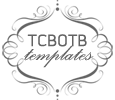I have a few good UDL websites, as you've seen below. But I was curious to find some extras. So far I came across this one..
http://cafe.durhamcollege.ca/index.php/curriculum-development/universal-design-for-learning/top-10-udl-websites
which lists a bunch of helpful sites! I'll continue to find new, exciting sites that are user friendly! Let me know if you come across anything exciting or different on the web!
Sunday, September 8, 2013
Incredible Resources!!
UDL is of course interesting, but after blogging, learning more, and then evaluating my own lessons on my use and lack of use of UDL, I was left unsure. It's apparent I should use more aspects of UDL in my own classroom, but how? If you find yourself asking the same.. the following website will be amazing help!
http://www.udlcenter.org/implementation/examples
This website breaks down UDL by it's principles and guidelines. If there is a guideline you think you need more practice/help with, simply click it. A page of ideas, resources, websites, etc will pop up, all pertaining to that specific UDL guideline! Sometimes you become so stuck in your ways as an educator, you forget how to switch things up for your students (even if sometimes you know you should!). This is a phenomenal reference to help guide you to enhance your lessons for your students in a variety of ways! Absolutely worth looking into!
http://www.udlcenter.org/implementation/examples
This website breaks down UDL by it's principles and guidelines. If there is a guideline you think you need more practice/help with, simply click it. A page of ideas, resources, websites, etc will pop up, all pertaining to that specific UDL guideline! Sometimes you become so stuck in your ways as an educator, you forget how to switch things up for your students (even if sometimes you know you should!). This is a phenomenal reference to help guide you to enhance your lessons for your students in a variety of ways! Absolutely worth looking into!
Curriculum Barriers
There are so many fantastic techniques and methods used while teaching the given curriculum, but sadly they're not fabulous for everyone. I explored a curriculum barriers tutorial on...
http://www.cast.org/teachingeverystudent/tools/curriculumbarrierstutorial.cfm?t_id=116&step=1
It was interesting to work through the steps of the process, choosing a student, choosing curriculum, and analyzing the data. I think the tools in this process and the blank template you can acquire would be excellent tools for any teacher currently working. It allows you a much more in depth view of your lesson, how to change/alter the lesson to actually reach all learners. This would also be great to work with a targeted group (maybe for an SGO). The student I chose to practice the tutorial with, Jamal, would have little help in my classroom if I continued to teach how I currently do. Third grade is writing intensive and that's something he has difficulty with. Using this curriculum barriers tutorial showed me to break down strengths and weakness to better understand how to customize education/delivery of content for all children. This is definitely something every educator should look at and try to practice with lessons in their classroom to evolve their teaching.
http://www.cast.org/teachingeverystudent/tools/curriculumbarrierstutorial.cfm?t_id=116&step=1
It was interesting to work through the steps of the process, choosing a student, choosing curriculum, and analyzing the data. I think the tools in this process and the blank template you can acquire would be excellent tools for any teacher currently working. It allows you a much more in depth view of your lesson, how to change/alter the lesson to actually reach all learners. This would also be great to work with a targeted group (maybe for an SGO). The student I chose to practice the tutorial with, Jamal, would have little help in my classroom if I continued to teach how I currently do. Third grade is writing intensive and that's something he has difficulty with. Using this curriculum barriers tutorial showed me to break down strengths and weakness to better understand how to customize education/delivery of content for all children. This is definitely something every educator should look at and try to practice with lessons in their classroom to evolve their teaching.
Background knowledge
As a student, I knew how I liked to learn. As a
teacher, I see regularly everyone learns in different ways which is why UDL is
such an interesting and important aspect of the classroom. Upon
completing an activity on
I
saw how the process in the brain works. A picture was shown and you were
prompted to complete several questions. They explained depending on who
you are, your background, etc, you would answer these questions
differently. You were given the opportunity to work with the picture
again, with a different goal in mind. It then was able to show that eye
movements (same person, same picture) were drastically different since
different goals were in mind for a similar task. Even though you're doing
something easy (viewing an image) all three brain networks (reflective,
strategic, and affective networks) are working to process information, and doing so in different ways for different goals.
I though this was really interesting, the switch of a simple goal, but completion of the same task, could draw different results. I challenge you to try this for yourself!
Deeper into UDL
In my last post I introduced a new topic I'm learning about, UDL. This stands for Universal Design for Learning and is a tool to help all children learn, similar to differentiated instruction but more intense. I found I wasn't completely sure about it's principles and guidelines until I found... http://www.udlcenter.org/aboutudl/udlguidelines/principle1 On this site
you could go through the guidelines for UDL in great depth. This is a fantastic resource to better understand UDL as a whole, it's 3 main principles as well as their guidelines. You can click through each guideline to learn more, see examples of the guideline in action as well as read up on the most current research for that specific area. For example.. background knowledge is an incredibly important aspect to every lesson and learning in general, in fact my students will be activating their prior knowledge/background knowledge this coming week as part of our weekly story skill. On the UDL website is discusses the importance of this piece, how to do it, examples of it in lessons, and research on why it's valid. That's just one guideline to that principle!
UDL.. a quick description
UDL..A new'ish' term to education. Having finished my undergrad in 2010, I missed out on this term and have been introduced recently. I had a difficult time wrapping my mind around it for some reason. It's defined as..
Universal Design for Learning helps meet the challenge of diversity by suggesting flexible instructional materials, techniques, and strategies that empower educators to meet these varied needs.
So if you've ever explored differentiated instruction, you may find them somewhat comparable.
On this wiki site you can get a quick introduction to UDL and it's 3 main principles. It also connects you to cast.org which is an incredible resource for UDL. I'll certainly be diving into this topic.. so begin to educate yourselves and check back for new information!
Universal Design for Learning helps meet the challenge of diversity by suggesting flexible instructional materials, techniques, and strategies that empower educators to meet these varied needs.
So if you've ever explored differentiated instruction, you may find them somewhat comparable.
On this wiki site you can get a quick introduction to UDL and it's 3 main principles. It also connects you to cast.org which is an incredible resource for UDL. I'll certainly be diving into this topic.. so begin to educate yourselves and check back for new information!
Subscribe to:
Comments (Atom)



